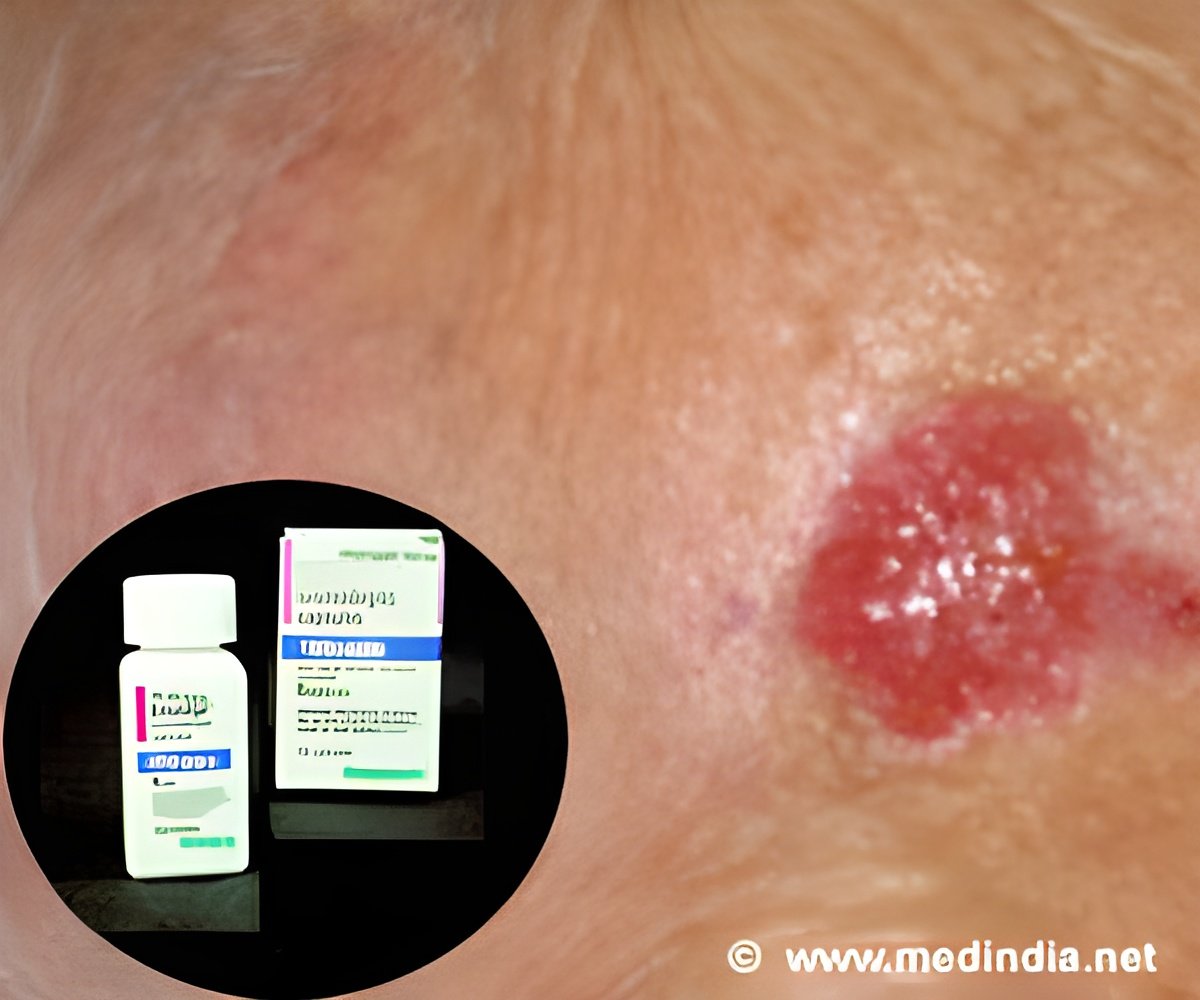
BRAF mutations are found in more than half of all cases of melanoma, and previous studies have shown vemurafenib increases survival for these patients, according to Stuart. However, most patients relapse with lethal, drug-resistant disease.
In a previous study to investigate the mechanisms causing melanomas to become resistant to vemurafenib, Stuart and his colleagues grew patient-derived tumors expressing BRAF mutations in mice and demonstrated that not only do these tumors develop vemurafenib resistance, but they become dependent on the drug to grow. Tumors stopped growing and regressed after cessation of the drug in these animals.
To evaluate whether the drug dependency observed in animals is seen in humans as well, Stuart and his team collaborated with colleagues who evaluated 42 patients with vemurafenib-resistant tumors at the Royal Marsden Hospital in London, United Kingdom. Computed tomography scans of the tumors taken after cessation of treatment were available for 19 patients. Of these patients, 14 showed a decrease in the rate of their tumor growth.
"This is the first evidence that the drug-addicted state that we observed in our mouse models may also occur in humans," said Stuart.
He and his colleagues also implanted mice with human patient-derived tumors and treated them with vemurafenib either continuously or intermittently - four weeks on and two weeks off. They found that none of the tumors in animals assigned to intermittent dosing developed drug resistance.
Advertisement
Abstract Number: LB-144
Advertisement
Title: Modeling vemurafenib resistance in melanoma reveals a strategy to forestall drug resistance
Authors: Meghna Das Thakur, Rosalie Fisher, Fernando Salangsang, Allison S. Landman, William R. Sellers, Nancy K. Pryer, Mitchell P. Levesque, Reinhard Dummer, Martin Gore, James Larkin, Martin McMahon & Darrin D. Stuart
Mutational activation of BRAF is the most prevalent genetic alteration in human melanoma, with 50% of tumors expressing the BRAF (V600E) oncoprotein. Moreover, the impressive tumor regression and increased survival of late-stage BRAF-mutated melanoma patients in response to treatment with vemurafenib demonstrates the essential role of oncogenic BRAF in melanoma maintenance. Although vemurafenib therapy has transformed the treatment of late-stage melanoma patients, the durability of patient response to this drug is limited by the emergence of lethal drug resistant disease. Thus, understanding mechanisms and designing approaches to prevent the emergence of resistance are critical to providing improved therapy.
Here we model the emergence of vemurafenib resistance using two early passage primary human-patient-derived xenograft (PDX) BRAF(T1799A)-mutated melanoma models, which were continuously treated with vemurafinib in immunocompromised mice. In one of these models vemurafenib resistance is due to selection of cells with elevated expression of the BRAF(V600E) oncoprotein. Remarkably, vemurafenib resistant tumors are not only drug resistant but also develop drug dependency such that tumors require exposure to vemurafenib for their continued proliferation. Indeed, cessation of drug administration in these PDX models leads to inhibition of tumor growth and, in many cases, tumor regression. This fitness deficit upon cessation of drug administration is based on an adaptive response to levels of MAPK pathway signaling output. Melanoma cells appear to proliferate best at a defined intermediate level of RAFï‚®MEKï‚®ERK signaling output. Hence, when drug resistant tumor cells are deprived of drug, the level of signaling output is increased leading to decreased proliferation.
We sought to determine whether vemurafenib-resistant tumors in melanoma patients displayed similar evidence of drug dependency. In a small cohort of patients (n=42) with vemurafenib-resistant tumors for which CT scans were available following cessation of treatment (n=19), 14 out of 19 patients demonstrated evidence of reduced tumor growth velocity. Taken together, these data support the hypothesis that continuous treatment with vemurafenib can select for drug-resistant tumor cells that show a fitness deficit in the absence of the drug. Furthermore, we demonstrate in the pre-clinical setting that these observations can be leveraged therapeutically by using a discontinuous treatment regimen to forestall the emergence of resistance in two different PDX models. Consequently, these data may have important implications for the treatment of BRAF mutated melanoma patients with BRAF (V600E) inhibitors and suggest that altered dosing might delay or prevent the emergence of lethal drug resistant disease.
Source-Newswise









